Request a demo today to learn more about how VComply can help your business.
Driving Success: Explore the Benefits of Risk Management Software
A robust risk management framework is essential for organizations to proactively identify, assess, and mitigate potential risks that could impact their objectives. By implementing an effective risk management framework, businesses can enhance their decision-making processes, protect their assets, and achieve long-term success.

This blog will guide you through the key steps of building a robust risk management framework. It explores the benefits of risk management software, and how it can empower organizations to navigate risks effectively.
Steps to Establish a Risk Management Process
An effective risk management framework consists of several key steps organizations should follow to manage risks successfully.
1. Establish Risk Management Objectives
Begin by defining your organization’s risk management objectives. These objectives should align with your overall business goals and reflect your risk appetite. Clearly articulating your objectives will provide a foundation for the rest of your risk management framework.
2. Identify and Assess Risks
Conduct a comprehensive risk assessment to identify and evaluate potential risks. This involves analyzing internal and external factors that could impact your organization, such as operational, financial, legal, and reputational risks. Prioritize risks based on their likelihood and potential impact to focus your resources on the most critical areas.
3. Implement Risk Mitigation Strategies
Develop and implement risk mitigation strategies to reduce the likelihood or impact of identified risks. This may involve implementing controls, policies, procedures, or other risk mitigation measures. Consider each strategy’s effectiveness, feasibility, and cost to ensure optimal risk reduction.
4. Monitor and Review
Establish a robust monitoring and review process to monitor the effectiveness of your risk management framework continuously. Regularly assess the implementation of risk mitigation strategies, track emerging risks, and evaluate the overall performance of your risk management efforts. This allows you to make informed adjustments and improvements as needed.
5. Foster a Risk-Aware Culture
Promote a risk-aware culture within your organization by fostering open communication, employee training, and awareness programs. Encourage employees to report potential risks, near misses, and incidents, creating a culture of transparency and accountability.
6. Leverage Technology and Software Solutions
Implementing risk management software can greatly enhance your framework’s effectiveness. These software solutions provide advanced features such as centralized risk registers, automated workflows, real-time monitoring, and reporting capabilities. They streamline risk assessment, mitigation, and reporting processes, enabling efficient, data-driven decision-making.
7. Regular Reporting and Communication
Develop a structured reporting framework to communicate risk management updates to relevant stakeholders, including executives, board members, and regulatory bodies. Regular reports should include key risk indicators, progress on risk mitigation actions, and updates on emerging risks. Effective communication ensures transparency and facilitates informed decision-making.
Building a solid risk management framework is crucial for organizations to navigate uncertainties and safeguard their long-term success. Businesses can proactively manage risks and protect their interests by establishing clear objectives, identifying and assessing risks, implementing effective mitigation strategies, and leveraging technology. Regular monitoring, fostering a risk-aware culture, and effective communication further strengthen the framework. Invest time and resources into building a comprehensive risk management framework to mitigate potential threats, seize opportunities, and thrive in an ever-changing business landscape.
Benefits of Implementing a Comprehensive Risk Management Process
As mentioned in the earlier paragraph, implementing risk management software enhances the effectiveness of risk management processes. In addition to the benefits provided by risk management software, implementing a comprehensive risk management process brings several advantages to businesses:
- Early Risk Detection: By integrating robust risk management practices, organizations can detect potential problems and vulnerabilities at an early stage. This allows for timely intervention and proactive measures to mitigate risks before they escalate and become costly to address.
- Informed Business Decisions: A well-established risk management process provides valuable insights into potential risks associated with various business decisions. This empowers business leaders to make informed decisions that align with the organization’s strategic objectives. By considering risks and their potential impact, organizations can avoid costly mistakes, capitalize on opportunities, and adapt to emerging risks posed by new technologies.
- Improved Stakeholder Confidence: Effective risk management instills confidence in stakeholders, including customers, suppliers, investors, and employees. It demonstrates a commitment to project success and safeguards the organization’s reputation. By identifying and assessing risks across different areas of the business, risk management breaks down silos and promotes collaboration, leading to better risk mitigation and stakeholder trust.
- Proactive Risk Management: A comprehensive risk management process enables organizations to address risks and anticipate potential challenges proactively. This fosters a culture of risk awareness and encourages proactive risk mitigation strategies, minimizing the likelihood of adverse events and maximizing opportunities for success.
- Enhanced Resilience: By implementing a structured risk management approach, organizations enhance their resilience in the face of uncertainties and disruptions. They are better prepared to navigate unexpected events, adapt to changing market conditions, and recover from setbacks more effectively.
- Compliance and Regulatory Alignment: An effective risk management process ensures that organizations comply with applicable regulations and industry standards. Organizations can avoid legal and financial penalties by identifying and addressing compliance risks, maintaining a strong reputation, and building trust with regulatory bodies.
Benefits of Risk Management Software
Risk management software automates risk management processes and provides a centralized platform for managing risks, streamlining processes, and enhancing decision-making. The software typically offers features such as risk identification, risk assessment, risk monitoring, risk reporting, and mitigation planning.
Now, let’s explore the key benefits of implementing Risk Management Software and how it can propel your business toward greater success.
- Streamlined Risk Processes: Implementing Risk Management Software streamlines and automates your risk management processes. Say goodbye to tedious manual tasks and spreadsheets. The software simplifies risk identification, assessment, and monitoring with intuitive interfaces and powerful functionalities. This streamlining saves valuable time, enhances efficiency, and ensures a systematic approach to risk management.
- Enhanced Decision-Making: Risk Management Software empowers informed decision-making by providing real-time data and insights. The software consolidates risk information from various sources and presents it in a comprehensive and visual manner. This enables stakeholders to have a holistic view of risks, identify trends, and make data-driven decisions. Organizations can proactively respond, seize opportunities, and optimize their strategies by clearly understanding potential risks.
- Improved Compliance: Compliance with regulatory requirements is critical to risk management. Risk Management Software helps organizations stay compliant by centralizing compliance processes, tracking regulatory changes, and automating compliance workflows. With built-in compliance frameworks and alerts, the software ensures that your organization stays on top of regulatory obligations, mitigates compliance risks, and avoids penalties or reputational damage.
- Proactive Risk Mitigation: Risk Management Software facilitates proactive risk mitigation by enabling organizations to identify and assess risks quickly. With comprehensive risk assessment functionalities, organizations can prioritize risks based on severity and likelihood, assign responsibilities, and track mitigation efforts. By taking a proactive approach to risk mitigation, organizations can minimize potential threats, safeguard their operations, and maintain business continuity.
Navigate the Complexities of Risk Management with VComply
VComply is a comprehensive risk management software that helps organizations streamline and automate their risk assessment, compliance, and governance processes. With features like centralized data management, customizable workflows, and real-time reporting, VComply empowers businesses to identify and mitigate risks proactively, ensuring regulatory compliance and fostering a culture of effective risk management.
VComply empowers organizations to proactively manage risks, make informed decisions, and drive a risk awareness and mitigation culture. By implementing the VComply platform, organizations can confidently navigate the complexities of risk management.
Inherent and Residual Risk Assessment
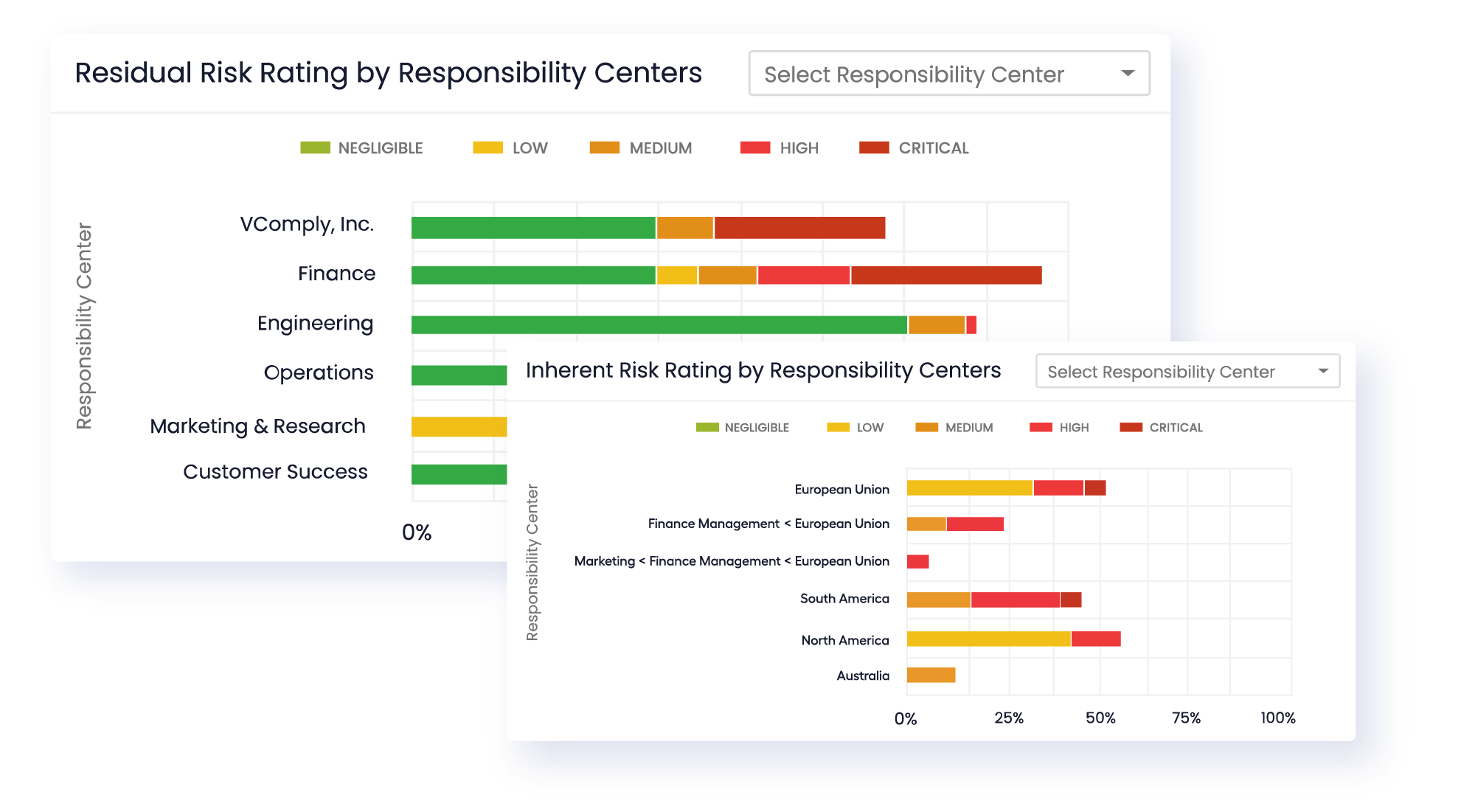
VComply facilitates the assessment of both inherent and residual risks across the organization. Organizations comprehensively understand their risk landscape by capturing and evaluating the inherent risk levels associated with various business processes and activities. The platform then enables users to assess and monitor the residual risk levels after implementing control measures, providing valuable insights into the effectiveness of risk mitigation strategies.
Risk Rating and Matrix
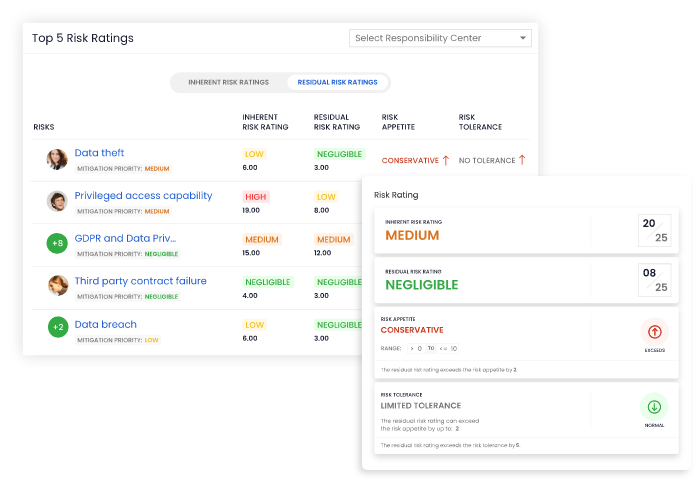
VComply offers a robust risk rating and matrix functionality that allows organizations to categorize and prioritize risks based on their impact and likelihood. This feature enables users to assign appropriate risk ratings to different risks, facilitating a clear understanding of their significance and guiding decision-making processes. By leveraging the risk matrix, organizations can focus their attention on high-risk areas and allocate resources accordingly for effective risk mitigation.
Dashboards for Real-Time Risk Insights
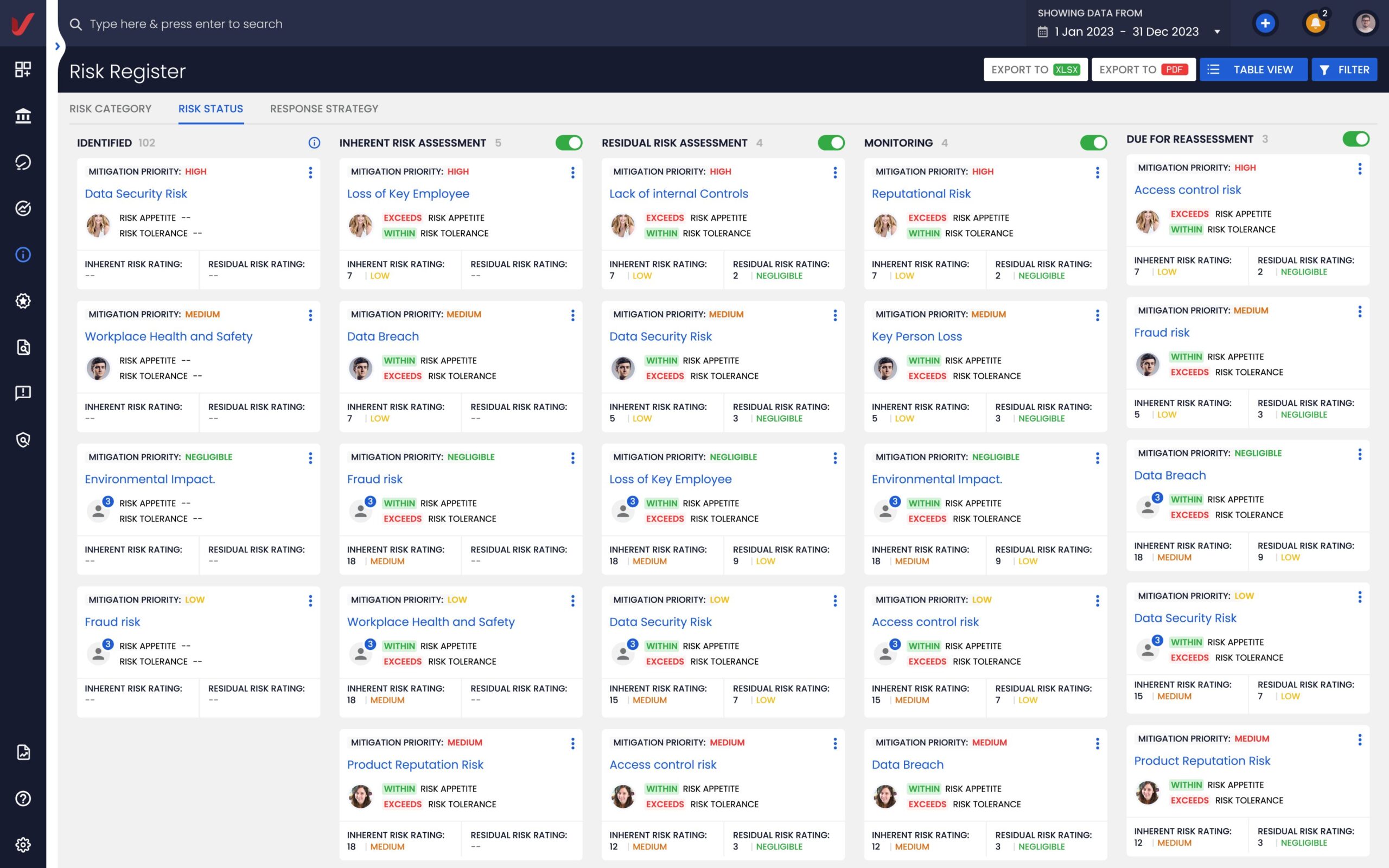
VComply’s dynamic dashboards provide real-time visibility into an organization’s risk profile. With customizable widgets and visualizations, users can monitor key risk indicators, track risk trends, and gain actionable insights. The intuitive interface allows stakeholders to identify emerging risks, assess the effectiveness of control measures, and make informed decisions based on up-to-date risk data.
Flexible Reporting Capabilities
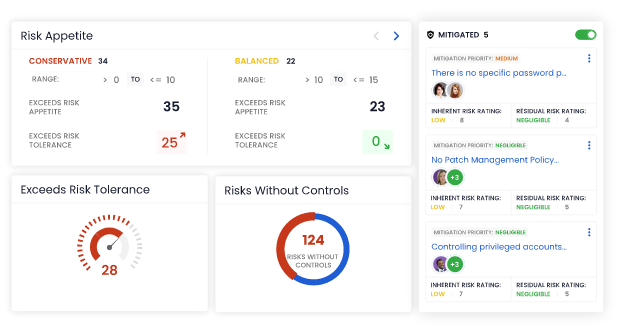
VComply empowers organizations to generate flexible and customizable risk reports. The platform offers a range of predefined report templates and the ability to tailor reports to specific requirements. Users can easily capture and present risk information, including risk assessments, control measures, and workroom details. These comprehensive reports enable organizations to communicate risk-related information effectively to stakeholders, regulators, and auditors.
Risk Workroom Collaboration
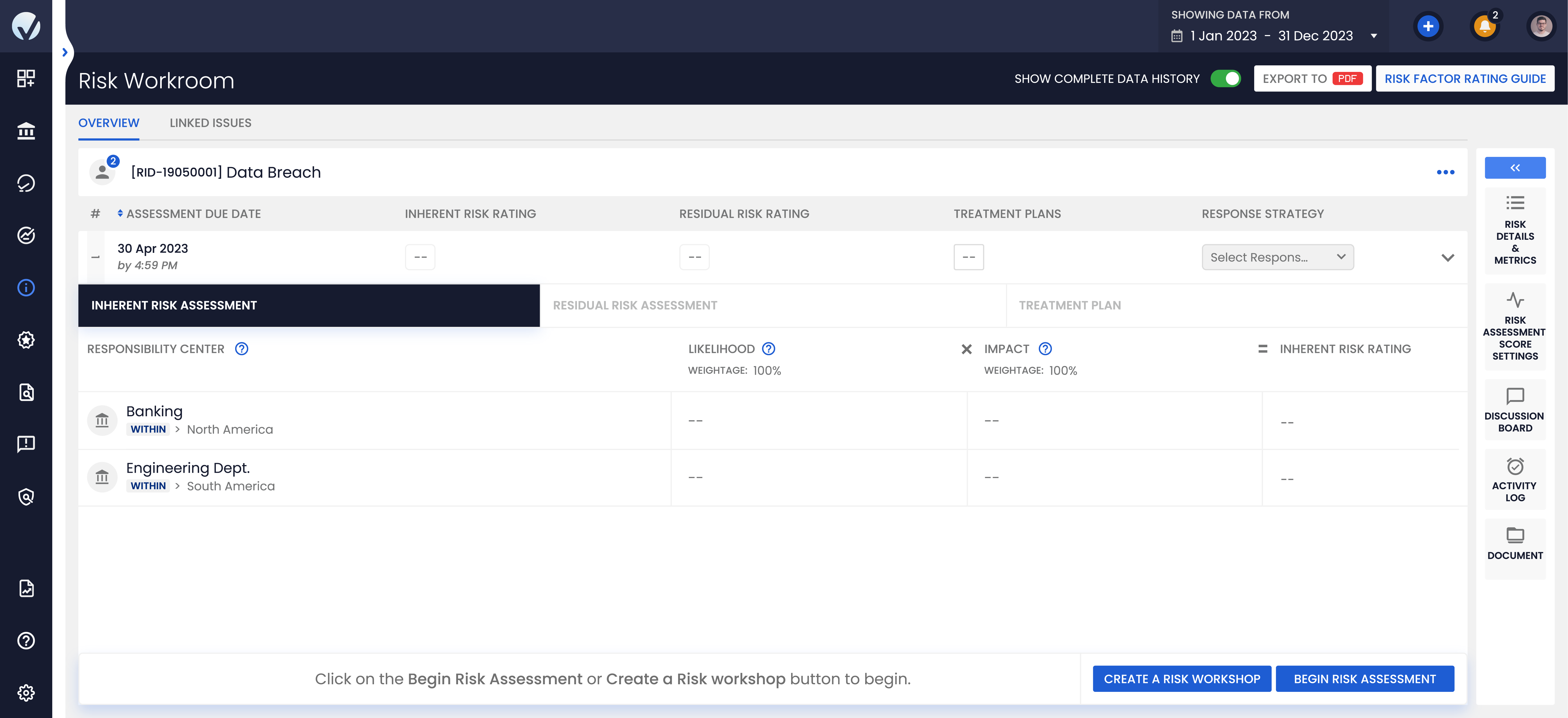
VComply provides a collaborative workspace, known as the risk workroom, where users can document, discuss, and track risk-related activities. This feature promotes transparency, accountability, and effective communication among team members involved in risk management processes. By centralizing risk-related discussions, organizations can foster collaboration, share insights, and ensure that all stakeholders are aligned in their risk mitigation efforts.
Risk Heatmap Visualization
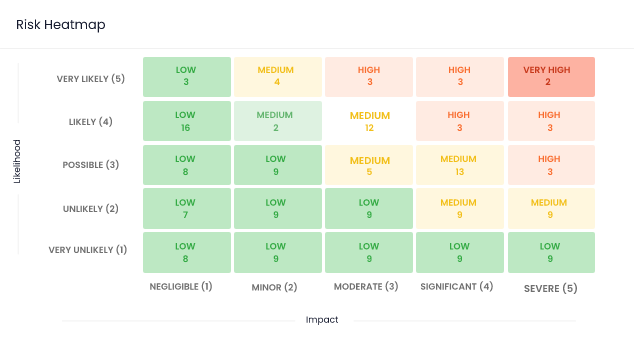
VComply’s risk heatmap offers a visually engaging representation of risks across different dimensions, such as departments, projects, or specific risk areas. The heatmap helps identify and highlight areas with higher risk exposure, enabling organizations to allocate resources and implement targeted control measures where they are most needed. This visual representation enhances risk awareness and aids in strategic decision-making for risk management.
Assigning and Monitoring Control Measures
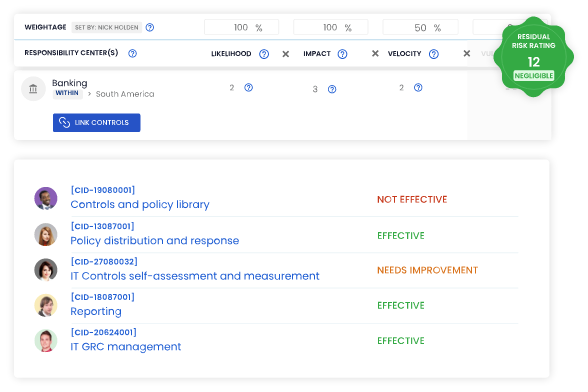
VComply allows organizations to assign and track control measures to address identified risks. Responsible individuals can be assigned control tasks through the platform, ensuring accountability and proactive risk mitigation. The system provides notifications and alerts to keep stakeholders informed about pending control tasks, deadlines, and progress, enabling timely action and ensuring compliance with risk management strategies.
Conclusion
Are you looking to automate your risk management processes? Consider VComply’s risk management tool as a reliable solution for simplifying risk assessment, mitigation, and monitoring, making risk management more efficient and effective for your organization. From inherent and residual risk assessment to dynamic dashboards, flexible reporting, risk workroom collaboration, and assigning control measures, VComply empowers organizations to proactively manage risks, make informed decisions, and drive a risk awareness and mitigation culture.
